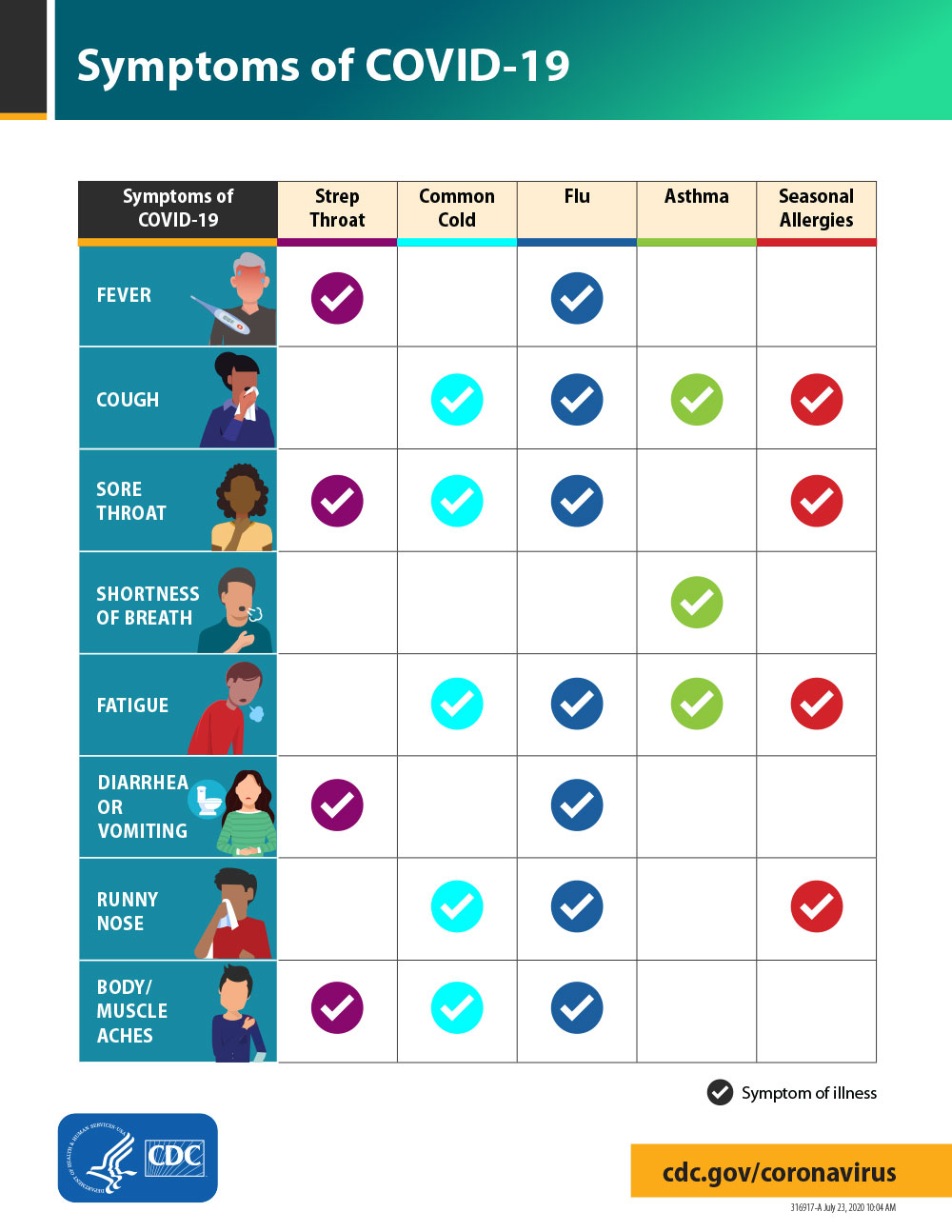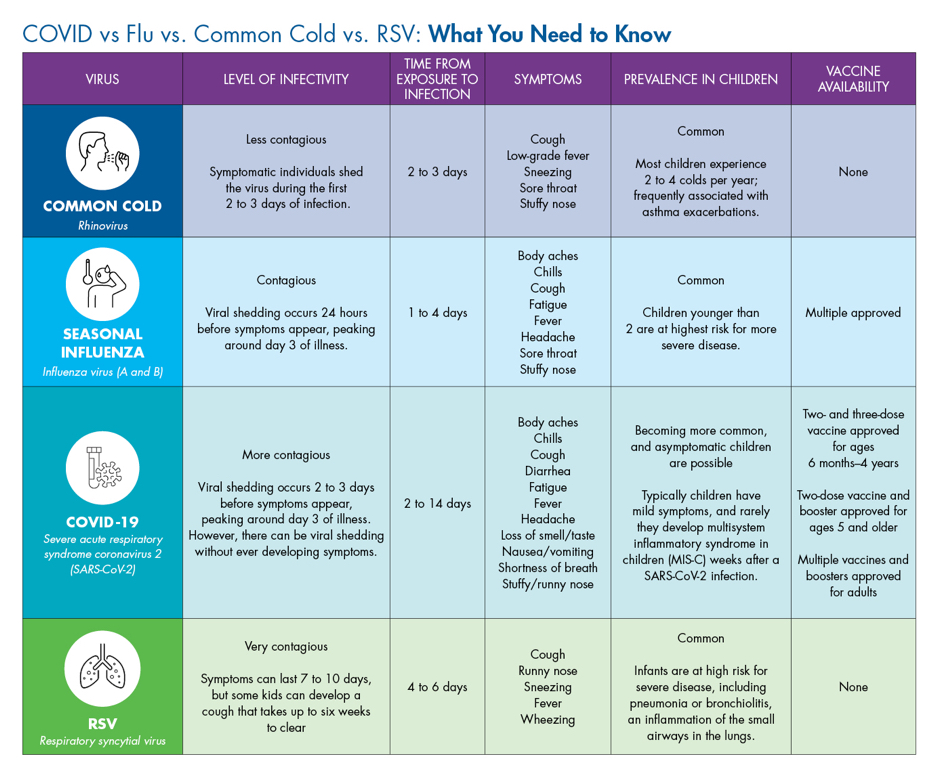Hello All,
I would like to share some information about the following viruses; the common cold, the flu, RSV and COVID-19.


The difference between the common cold, the flu, RSV and COVID-19:
- The flu is caused by the influenza virus, which is seen worldwide and has a seasonal cycle in temperate regions, typically starting in the fall and lasting through the spring. It leads to high fevers, coughing, body aches and other respiratory symptoms.
- The common cold, on the other hand, is caused by the rhinovirus and comes with milder symptoms: a runny nose, slight cough. Although everybody experiences illnesses differently, in most cases, if you have a cold you’re still able to function, whereas with the flu you may not.
- RSV, meanwhile, is a result of the respiratory syncytial virus, which can affect the respiratory system, including the nose, throat and lungs. In most people, the virus will present like a cold—a cough, runny nose and sometimes a fever—but in some it can be dangerous. In infants, RSV can cause pneumonia or bronchiolitis, and people over the age of 50 or those with heart or lung disease are also at risk for complications.
- COVID-19 is caused by severe acute respiratory syndrome coronavirus 2 (SARS-CoV-2) and is more serious because of the higher mortality rate. It’s characterized by fevers, cough, runny nose, body aches, and loss of taste and smell. For the most part, children seem to fare much better than adults if they get the coronavirus, but families should still be extra cautious
Encourage students, parents, and staff to take everyday preventive actions to stop the spread of germs.
- Encourage students and staff to stay home when sick.
- Inform students, parents, and staff about the importance of staying home when sick until at least 24 hours after they no longer have a fever* or signs of a fever (chills, feeling very warm, flushed appearance, or sweating) without the use of fever-reducing medicine.
Encourage hand hygiene among students and staff through education, scheduled time for handwashing, and by providing appropriate supplies.
- Teach students and staff to cover coughs and sneezes with a tissue or their bent arm. If they use a tissue, they should put the used tissue in a trash can and wash their hands.
- Provide adequate supplies within easy reach, including tissues and no-touch trash cans.
- Teach students and staff to wash hands often with soap and water for 20 seconds, dry hands with a paper towel, and use the paper towel to turn off the faucet. If soap and water are not available and hands are not visibly dirty, an alcohol-based hand sanitizer containing at least 60% alcohol may be used.
- Include handwashing time in student schedules.
- Provide adequate supplies, including clean and functional handwashing stations, soap, paper towels, and alcohol-based hand sanitizer.
- Encourage students and staff to keep their hands away from their nose, mouth, and eyes.
- Encourage routine surface cleaning through education, policy, and the provision of supplies. How To Clean and Disinfect Schools to Help Slow the Spread of Flu.
- Routinely clean surfaces and objects that are touched often, such as desks, countertops, doorknobs, computer keyboards, hands-on learning items, faucet handles, and phones. Empty trash cans as needed.
- Use general cleaning products that you normally use. Always follow product label directions. Additional disinfection beyond routine cleaning is not recommended.
- Provide adequate supplies, such as general EPA-registered cleaning products, gloves, disinfecting wipes, and no-touch trash cans.
- Match your cleaning activities to the types of germs you want to remove or kill.
- Flu viruses are fragile, so standard practices, such as cleaning with soap and water, can help remove and kill them.
- Studies have shown that the flu virus can live and potentially infect a person for only 2 to 8 hours after being deposited on a surface. Therefore, special sanitizing processes beyond routine cleaning, including closing schools to clean every surface in the building, are not necessary or recommended to slow the spread of flu, even during a flu outbreak.
- Some schools may include other cleaning and disinfecting practices in their standard procedures to address germs that are not removed or killed by soap and water alone.

